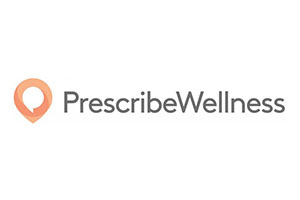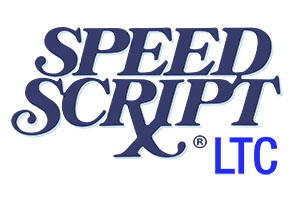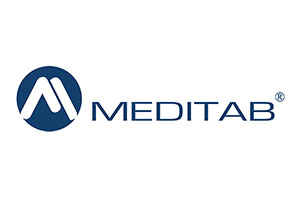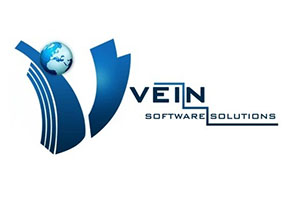Pharmacy software provides actionable insight into the workings of your pharmacy, improves efficiency, and enhances the customer experience.
Pharmacy software automates inventory tracking, facilitates error-free claims, enables e-prescriptions, and simplifies workflow. If you are serious about remaining competitive, pharmacy software should be the keystone of your strategy going forward.
There are dozens of pharmacy software systems on the market today. They range in complexity from the very basic to extremely sophisticated and in price from the downright cheap to the merely affordable.
After assessing scores of programs from every relevant angle, we concluded that the following are the best pharmacy software programs of 2023.
Rankings
1. Rx30 Pharmacy System

Rx30 provides comprehensive management solutions for pharmacies great and small. Every aspect of pharmacy management is addressed from e-prescriptions to accounts management to inventory control, drug interaction warnings, and more.
What we like: Rx30 puts the emphasis on prescription management but does not ignore other aspects of the business. Robust inventory control, appointment management, invoicing, comprehensive reporting, and an easy to use patient portal are all first-rate.
Flaws: Relatively expensive.
2. PrescribeWellness

PrescribeWellness is intended for independent pharmacists. It facilitates the prescription process, enables error-free dispensing of medicine, and can be scaled up or down depending on your specific needs and goals.
What we like: The software is designed to promote greater awareness of customer activity, with the goal of streamlining care based on individual tendencies. Improve your performance by enhancing the customer experience.
Flaws: Integration with existing software is not exactly robust.
3. ScriptPro Pharmacy Automation

ScriptPro Pharmacy Automation is the grizzled veteran of the pharmacy software sector. They led the way with innovative robotic prescription filling systems back in the 90s. And they remain on the cutting edge today with their full array of pharmacy management applications.
What we like: ScriptPro allows you to manage every aspect of the customer interaction from point of contact through point of sale. E-prescriptions, claims processing, barcode scanning, and compound tracking are all on tap.
Flaws: While training is excellent, some other aspects of support are spotty.
4. Speed Script

Versatile, powerful, and dependable. Those are just some of the adjectives that come to mind to describe the Speed Script Pharmacy Software. Speed Script is designed for small to mid-sized independent enterprises and can be up and running in just a few days.
What we like: Speed Script covers all the pharmacy management bases and then some. Document management, inventory control, online reporting, barcode reading, e-prescribing, and more are all present in one affordable package.
Flaws: Not available for Mac. The app is not compatible with iPhones.
5. ApotheSoft-Rx

ApotheSoft-Rx pharmacy software exceeds expectations at every turn. It is feature-rich, reliable, convenient, and does not come with an imposing learning curve. It’s an outstanding overall value that will help you streamline your business.
What we like: We appreciate the focus on independent pharmacies, the fast and reliable claims processing, the drug interaction checking, and more. They also offer a free trial version that is a reasonable facsimile of the paid version.
Flaws: Company website looks like it has not been updated since 2005. Support during business hours only.
6. BestRx

Whether you have a small local pharmacy or manage multiple locations of a corporate chain, you can benefit from BestRx. BestRx is scalable, reliable, feature-rich, easy to learn, and more affordable than many of its closest competitors.
What we like: BestRx provides everything you expect from a pharmacy software and many things you did not expect. Barcode generation, e-signature capture, electronic prior authorization, and automated weekly price updates are all on tap.
Flaws: Not compatible with the Apple operating system.
7. MediTab IPS Intelligent Pharmacy Software

MediTab puts all their practice management experience to work in their outstanding IPS Intelligent Pharmacy Software. From e-prescriptions to billing to RHP verification and delivery, you will experience new levels of efficiency at every turn.
What we like: IPS MediTab Intelligent Software is highly customizable and can be easily adapted to the pharmacy environment and help you streamline every aspect of your business from claims filing to inventory.
Flaws: There are a lot of features that are of questionable use. It can also be glitchier than some other programs.
8. Medeil by Vanuston Intelligence

The Medeil system from Vanuston Intelligence helps turn moribund pharmacies into dynamic, customer-centric enterprises. This is among the fastest pharmacy software systems to deploy and features a surprisingly varied feature set for the price.
What we like: The Medeil system is extremely user-friendly, feature-rich, secure, and reliable. It is a great choice for small to medium-size operations, and Vanuston is one of the few companies that offer a worthwhile free version of their program.
Flaws: Requires an up-to-date computer to install and run it on.
9. Vein Pharma Software

Vein Pharma Software is an impressive all-purpose pharmacy management tool that recognizes your need to interact with hospitals, clinics, and specialists on behalf of your customers. Comes with outstanding training and support.
What we like: Vein Pharma Software is optimized for integration with the larger medical community. But it does not overlook your needs as a pharmacy owner or manager. Very user friendly. Comprehensive automation from POC to POS.
Flaws: Their company website takes forever to load.
10. CoverMyMeds Platform

Prescriptions are the heart and soul of your business. But prescription errors and denied claims drag down your entire operation. The folks at Covermymeds take this problem seriously and focus all their attention on facilitating the prescription experience.
What we like: Covermymeds was the first prior authorization platform to cover all payers and all medications. They are the brains behind billing for many of the top pharmacy management apps on the market today. Very easy to use.
Flaws: Limited in scope, they put all their eggs in the prescription basket.
Who Needs Pharmacy Software?
Any pharmacy owner or manager who wants to give his or her enterprise a leg up on the competition needs pharmacy software. Among other things, pharmacy software systems reduce operational costs, eliminate errors, enable effortless control over inventory, and vastly improve the customer experience.
Making the switch to a pharmacy software system can be done quickly, requires only minimal training, and costs far less than you imagine. Many pharmacy software programs integrate seamlessly with other business productivity apps. They provide you a comprehensive picture of your business at any time of the day or night on your business computer or your smartphone.
How We Ranked
The pharmacy software business is evolving at breakneck speed with new or upgraded features coming online seemingly every week. Perhaps the most significant change in recent years has been the migration from the licensed software model to the cloud-based subscription model. Determining what constitutes the ‘best’ in such a fast-moving sector means trying to hit a constantly moving target. Still, there are some objective criteria that can be applied to such programs that retain their relevance regardless.
It goes without saying, (or at least it should), that any pharmacy software designed to transmit customer/patient information over a public network (i.e. the internet), needs to encrypt that data in accordance with HIPAA regulations. No exceptions. And since most pharmacy software programs enable things like e-prescriptions, this need for robust encryption applies to both PC-based and cloud-based systems.
The next most important aspect of any pharmacy software system is the level of training and support the vendor supplies. Some pharmacy software programs are complex and multifaceted. Unless relevant staff is well trained in every aspect of its operation, the software could become more hindrance than help.
Next, the software must be stable and reliable. If the software system is cloud-based, the vendor must guarantee at least 99.9% uptime. All program functions must meet this standard of availability, not just a few, or most. If the software is installed on a compatible PC, it must not lag, hang or crash, as that would defeat the purpose of the program, which is to enhance efficiency.
The pharmacy software should also be feature-rich, be regularly updated, and offer an array of helpful alerts, warnings, and reminders. It should support key fields such as medical code, category, and generic equivalents, and it should facilitate safe, fast payment processing and claims submission. All these considerations factor into our rankings.
FAQs
Q: What is pharmacy software?
A: Pharmacy software is a computer-based system that allows for near-total automation of the processes that go into running a pharmacy. That includes billing, inventory control, e-scripting, automatic reminders, workflow management, and much more. Pharmacy software may be installed on the pharmacy computer or, more likely these days, it will be a cloud-based application (1) that the pharmacy owner is granted access to.
Q: Does pharmacy software help in running multiple stores?
A: Running multiple stores is a huge challenge and one that requires accuracy and efficiency in all aspects of management. Pharmacy software enables you to streamline your workflows, keep track of inventory in various locations, and reduce paperwork. The end result is that area managers have a much easier time keeping track of what is really going on in every store.
Q: Do I need to be a computer expert to operate pharmacy software?
A: Not at all. Most pharmacy software programs feature simple, easy to understand interfaces with intuitive navigation and familiar menu systems. Anyone with minimal computer experience should be able to master them quickly. Keep in mind, too, that all the best pharmacy software developers offer robust instruction to help you get up and running and to minimize the transition time between your old and new systems.
Q: Does pharmacy software allow for compound tracking?
A: Inventory tracking is all well and good, and when it comes to counting pills, it is a pretty straightforward process. Compounding pharmacies (2), however, need to keep track of how much of each ingredient is used in formulating a prescription and how much remains. Many types of pharmacy software allow for compound tracking, which makes the pharmacist’s life a lot easier.
Q: Do developers offer free trials of their pharmacy software?
A: Yes, many developers will provide you free access to a trial version of their pharmacy software so that you can try it out. Some will go so far as to send a representative to provide a free demonstration of the software. Although they are the exceptions.
Q: What are some things to look for in a pharmacy management system?
A: Each developer adds their own touches to pharmacy software, but there are a few things you will want to see in any system you choose. The interface must feature clear, intuitive navigation. The program should eliminate as much paper as possible. There should be robust inventory control, e-scripting, and plenty of helpful reminders and warnings regarding things like low stock levels and drug interactions.
Q: Is pharmacy software customizable?
A: Most pharmacy software allows for a certain amount of customization. That does not mean you will be able to add features, but you will be able to determine how best to deploy some of the features offered to suit your particular needs. Some developers offer a higher level of customization than others. So if customization is important to you, make sure you ask about it before committing to a particular pharmacy system.
Q: How long does it take to migrate data to the new pharmacy program?
A: Migration time will depend entirely on the program you choose, how much data there is to migrate, and the current state of that data. If most of your existing data is in digital form, migration can take anywhere from a few days to a couple of weeks. If the majority of your current data is in paper form, it will need to be digitized, and this may take a month, perhaps more depending on how much data is involved and the method used to digitize it (3).
Q: Can I choose who gets access to which part of the pharmacy program?
A: Absolutely. Most every pharmacy program allows you to set up different levels of access for different members of your team. Obviously, not everyone should have access to the financial records, patient/customer info, and other sensitive data. So as you go through the setup process, it will be up to you to create user accounts and determine permissions for each account.
Q: How do I know my customer’s data is secure?
A: Cloud-based applications raise serious questions about customer privacy. If a pharmacy software system is not HIPAA compliant (4), that means it is not authorized to receive, store, process, or otherwise handle patient information. Any pharmacy that uses a non-HIPAA compliant software system will itself be in violation of HIPAA regulations. A pharmacy software system should also be PCI compliant (5). PCI compliance ensures the privacy of customer credit card information.
Q: Do providers offer free instruction?
A: Most offer in-depth instruction into setting up and using the pharmacy software. They stick with you until you are sure you have mastered the system, and remain on call for the duration of your contract in the event you should have questions. These types of programs undergo regular updates as well. In which case, you will get a heads up that an update is coming and be provided further instruction should it be necessary.
Q: Am I protected if the provider’s server goes down?
A: Most pharmacy programs automatically backup your data on a regular basis. So, if there is a problem with a server, you do not wind up losing everything. Most cloud-based programs perform automatic backups once or twice per day. Most also give you the ability to perform backups whenever you see fit. The bottom line is that your data is safe, and even in a worst-case scenario, the amount of lost data will be minimal.
Q: Can I get my money back if I change my mind?
A: In most cases you will either purchase a license outright, or agree to at least a 1-year contract. Once you have signed on the dotted line, it will be exceedingly difficult to get your money back, unless you have some type of legitimate grievance, or you can prove some sort of deception on the part of the vendor.
Q: What are the benefits of electronic prescriptions?
A: Another of the many advantages of pharmacy software is its ability to integrate seamlessly with electronic prescriptions, or e-prescriptions (6). E-prescriptions provide a range of benefits. Among other things, they prevent lost or stolen paper prescriptions, enable the instantaneous integration of the prescription with the rest of the customer’s records, reduce prescribing errors, and prevent script forgery and theft.
Q: Is pharmacy software expensive?
A: Considering how it can improve your operation’s efficiency, pharmacy software is an outstanding value. Budget programs are available that start at less than $10 per month, while more deluxe programs may run a couple of hundred dollars per month.
Q: What is robotic dispensing?
A: Some 3/4 of all medicines now carry barcodes, as do most prescriptions. This makes automated dispensing (7) possible. A prescription is received by the dispenser, which matches the barcode to the barcode on the medication and dispenses the proper amount. Working with the pharmacy software, it then automatically updates inventory and customer records. Systems such as these dramatically reduce errors and waiting times for customers.
Q: Can I run pharmacy software on my business PC?
A: Though cloud-based applications are taking over, there are still some pharmacy software companies that sell individual licenses that can be installed on your PC. System requirements typically include Windows 10, at least 1 GB of RAM, a 1 GHz or faster processor, and 500 MB of free space on your hard drive. Also, because you will be dealing with sensitive information, you must have a robust firewall protection.
Related Articles
Recap
Pharmacy software can streamline every aspect of your pharmacy’s operation from point of contact to point of sale and beyond. Inventory control, e-prescriptions, payment processing, claims handling, comprehensive reporting, and more are all centralized and work in concert with one another to optimize efficiency, reduce errors, and enhance the customer experience.
Pharmacy software takes many forms, and as with most things in life, the more you pay, the more you tend to get. But even high-end pharmacy software is remarkably affordable and will pay impressive dividends.
If you are still dependent on paper prescriptions, accounting logs, inventory sheets, and customer files, you are losing money, and losing ground to the competition. By switching to one of the pharmacy software products on the above list, you provide your business a fighting chance.
For cpoe.org’s #1 recommended pharmacy software, click here.

